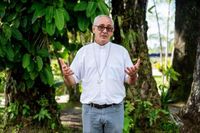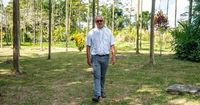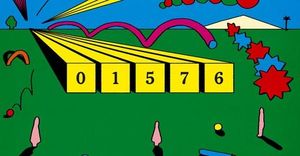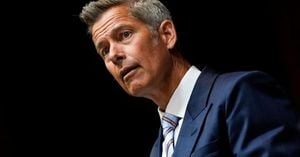As gold prices reach historic highs, the lush rainforests of Peru’s Amazon are facing an unprecedented threat—not just from deforestation, but from a silent, toxic invader: mercury. The surge in illegal gold mining, fueled by international demand and soaring prices, is poisoning rivers and endangering the health and livelihoods of thousands of Indigenous and rural residents. The alarm has been sounded by a prominent Catholic leader who has spent decades witnessing the region’s transformation firsthand.
Miguel Ángel Cadenas, an Augustinian priest and bishop who has lived in Peru’s Amazon for more than thirty years, recently issued an urgent appeal to the world. As reported by The Associated Press and The Independent on October 7, 2025, Cadenas is calling on nations that import gold—such as China, the United Arab Emirates, the United Kingdom, and Switzerland—to take responsibility for the environmental and human costs of their purchases. "The first responsibility should be that those countries buying gold require traceability, so that it is not possible to pass illegal gold into legality so easily," he stated. His plea comes as gold prices hover around $3,675 per ounce, with projections suggesting they could climb to $4,000 by 2026, according to JPMorgan analysts cited by The Independent.
Illegal mining in Peru’s Amazon has surged since the COVID-19 pandemic, Cadenas explained. The Tigre, Nanay, Napo, and Putumayo rivers—all lifelines for local communities—have become epicenters of mercury contamination. The situation is dire: tests have found mercury levels in some fish exceeding World Health Organization (WHO) limits, and hair samples from local residents analyzed by scientists and doctors reveal elevated concentrations of the toxic metal. "We are in a delicate situation," Cadenas told The Associated Press. "Given that the Amazonian diet is rich in fish, we are talking about food insecurity."
Mercury is commonly used in small-scale gold mining to separate gold from sediment. But its environmental impact is devastating. Once released, mercury contaminates water, accumulates in fish, and ultimately builds up in human bodies. The health consequences are severe, ranging from neurological impairment to developmental disorders. In regions where access to medical services is scarce, as in much of the Amazon, the risks are even greater. Research in Peru’s Madre de Dios region found that 43% of women of childbearing age had mercury levels above WHO safety thresholds. In some riverine villages, nearly 80% of residents had mercury concentrations surpassing acceptable limits, according to The Independent.
Despite its vast natural wealth, Loreto—the largest department in Peru’s Amazon—remains one of the country’s most vulnerable regions. About 60% of its population lacks access to potable water and sanitation, a situation Peru’s Constitutional Court declared "unconstitutional" two years ago. Yet, as Cadenas pointed out, the ruling remains unfulfilled. The lack of clean water only compounds the risks posed by mercury, limiting residents’ options for safe consumption and hygiene.
The environmental crisis is compounded by violence and intimidation. Environmental defenders who speak out against illegal mining and logging face grave dangers. Colombia has led the world in killings of such defenders in recent years, and Peru also ranks among the most perilous places for environmental activism. "There are people who are being threatened with death, and this seems extremely serious to me," Cadenas told The Independent, noting that illegal miners in remote areas are often linked to armed groups, including Colombian FARC dissidents.
The Peruvian government has made intermittent attempts to curb illegal mining and mercury use. In 2019, authorities launched Operation Mercury, a military and police crackdown that sharply reduced deforestation in the notorious La Pampa mining zone. However, much of the illegal activity simply shifted to new locations. This year, officials announced record seizures of contraband mercury, including a four-ton shipment intercepted at Callao port. Yet, according to Indigenous groups and regional governments, enforcement remains inconsistent, and cross-border smuggling of mercury continues to fuel the illicit trade.
One of the major challenges, analysts say, is the lack of robust traceability systems in the global gold trade. Weak oversight allows illegally mined gold—often tainted with mercury—to be laundered through refineries before entering markets for jewelry, electronics, or even national reserves. Reports from Switzerland and sustainability researchers focused on environmental, social, and governance (ESG) standards highlight how gold from the Amazon can slip into international supply chains with alarming ease.
Recognizing the transnational nature of the crisis, Cadenas insists that Peru cannot tackle the problem alone. "As long as the price of gold continues to rise, it is very difficult for a national government to manage this situation," he said. He is urging gold-importing countries to require proof of origin and environmental compliance, making it harder for illegal gold to be laundered into the global market.
Last week, the city of Iquitos hosted the Amazon Water Summit, an event organized with support from Cadenas’s Apostolic Vicariate. The gathering drew roughly 400 participants from Peru, Ecuador, Colombia, and Brazil, who took part in workshops on water, extractivism, climate change, and education. The summit underscored the interconnectedness of environmental, social, and economic challenges facing the Amazon basin.
For many in the region, the contamination crisis is not just an abstract environmental issue—it is a daily reality. "The majority of people do not understand what is happening. There is barely any information," Cadenas lamented. He called on the Peruvian state to "first provide good information to its own population and then sources of food that allow other alternatives—which do not exist." The lack of public awareness and viable dietary alternatives leaves communities especially vulnerable to the toxic legacy of mercury.
As the crisis deepens, Cadenas’s message carries both urgency and moral weight. He fears that unless international action curbs the demand for illicit gold, the situation will only worsen. "Every day that passes there are more people dedicated to illegal mining. While there isn’t serious international pressure, it will be very difficult," he warned. Yet, his plea is not just directed at policymakers but at anyone profiting from the destructive trade. "Earning money is fine, but it cannot be at the cost of injustice and the lives of the poorest," Cadenas said.
The fate of Peru’s Amazon—and the health of its people—now hangs in the balance, shaped by decisions made far beyond its borders. The world’s appetite for gold may be insatiable, but the cost, measured in poisoned rivers and imperiled lives, is one that communities in the Amazon cannot afford to bear alone.





